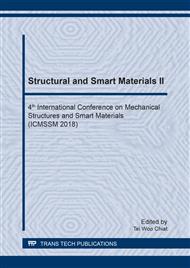p.20
p.26
p.34
p.43
p.48
p.53
p.58
p.66
p.75
The Pouring Process Optimization for the Conductive Slip-Rin
Abstract:
Based on its specific structural features, the packaging technology is extraordinary significant for the conductive slip-ring (CSR) encapsulating with epoxy molding compounds (EMC). In this work, a modified vacuum packaging technology has been proposed which includes a pouring process.By the construction of the relevant models, the packaging technology was calculated by MATLAB and discussed. It indicates that the EMC can be easily poured into the concentric ring slit of the CSR only with a differential pressure of 200 Pa between the outside pressure and the inside pressure. On the bases of the experimental results; the EMC can easily flow up from the bottom to the top of the CSR packaging mold vertically.
Info:
Periodical:
Pages:
48-52
Citation:
Online since:
January 2019
Authors:
Price:
Сopyright:
© 2019 Trans Tech Publications Ltd. All Rights Reserved
Share:
Citation:


